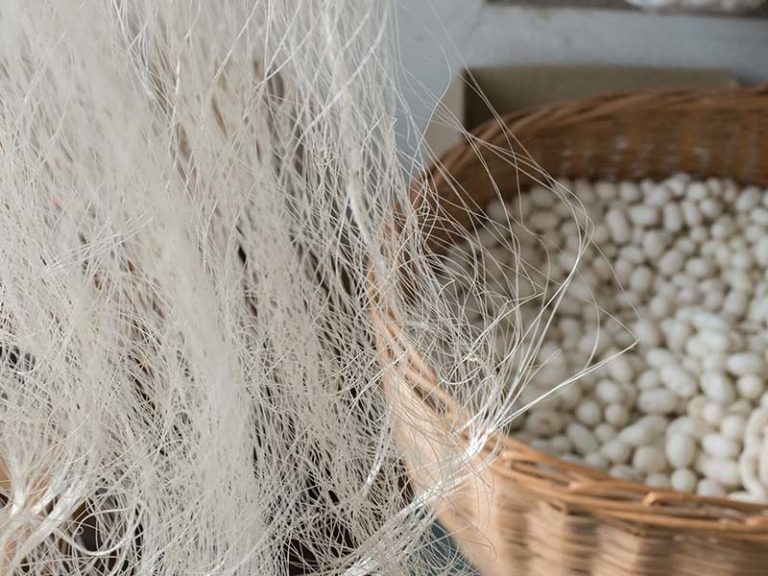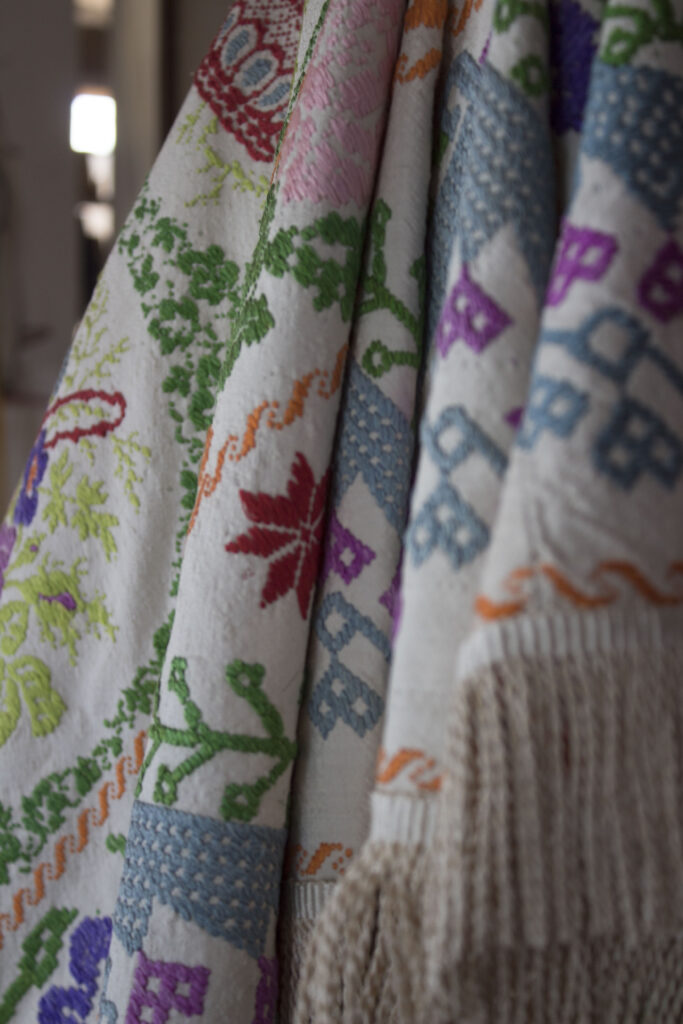NATURAL YARNS FOR UNIQUE FABRICS
The Fabbrica Tessile Bossio is the custodian of millenary traditions that have their roots in the Magna Graecia and Bretian culture, cohabiting for many centuries in the strip of Calabria between the colonies of Sýbaris and Króton , Sibari and Crotone today. These are techniques for the production of typical Mediterranean yarns, with production processes totally cadenced by the rhythms of nature, accompanied by the rules of water and fire. From these yarns, given by nature and enhanced by human ingenuity, unique and unrepeatable fabrics come to life whose weft is modeled by ancient looms and by ritual movements of the hands, known and kept alive by the very few who have handed them down, mainly in a matrilineal line, from generation to generation. Linen and cotton , but above all the very rare spinning and weaving of broom and silk through the activation of an integrated short supply chain, totally controlled and managed by the Bossio Textile Factory. From the raw material to the coloring and weaving, everything is full of the values of nature and tradition. Our company avails itself of the precious collaboration of the Master weaver Pasquale Filippelli, one of the greatest connoisseurs of natural fibers and their processing. Maestro Filippelli has designed and built ad hoc machinery for the processing of precious natural fibers and created important product innovations in the home decor, fashion and cosmetics lines.
THE ODOROUS BROOM

The odorous broom , the jinestra in the Calabrian declination of the Ionian area of Cosenza, is a typical shrub of the Mediterranean area, formerly used to produce textile fibers. It is a native variety of which the sprouts collected are used for the care and maintenance of the plant. The ionic Calabria boasted a great tradition in the use of the broom to produce yarns for the most varied uses. Today, the production of broom yarn and fabrics is an exclusive of our company and the whole manufacturing process is done only by hand, in total contact with the elements of nature and with the help of ancient spinning wheels and looms. Harvesting in bunches, between July and August, is followed by boiling, pulping, skinning, defibration, threshing, carding and finally spinning and weaving. The natural colors are obtained from the same boiling and the brighter colors from the petals of its flower. The garments made with these fabrics take on characteristics of uniqueness and unrepeatability and let us imagine the iconic Magna Graecia world of Pythagoras and Milone of Crotone.
Silk
The history of silk in Calabria is the history of an ancient tradition that had the female universe as its pivot. Women were at the center of a long process that began with the breeding of the worm , bombyx mori, and ended with spinning and weaving. The ancient art of the production of silk yarns and artifacts, from the Byzantine period to the end of the 19th century, was of primary importance for the Greek-Ionian economy of Calabria. Our company uses silk from the few and small local and sustainable farms that have their own mulberry trees: mulberry leaves are the exclusive source of nutrition of the worm. From these farms, located in still uncontaminated contexts, we acquire cocoons grown in a natural way from which we extract the yarn exclusively by mechanical means, without the use of chemicals, guaranteeing the well-being of animals and the environment, a high healthiness of the product and stimulating the small local businesses. The silk fabric can be supplied raw or colored with natural dyes and is suitable for the creation of refined high quality clothing and linen. Here it is used to make precious blankets, tapestries and shawls with ancient designs called “mantelle”.
The love for the ancient silk tradition and the respect for nature led us to create the SetiAmo line of cosmetic devices which includes gloves, natural silk pads and cocoons rich in the super proteins sericin and fibroin with highly beneficial properties in the care of skin and hair.
Natural fibers can be processed in purity or in a mixed way (linen / cotton – linen / broom – silk / cotton – silk / linen etc.) while the fabrics can be made raw, with raw design, natural dyes and with dyed natural designs. These combinations make it possible to create fabrics also on customer specifications.


 Regione Calabria
Regione Calabria